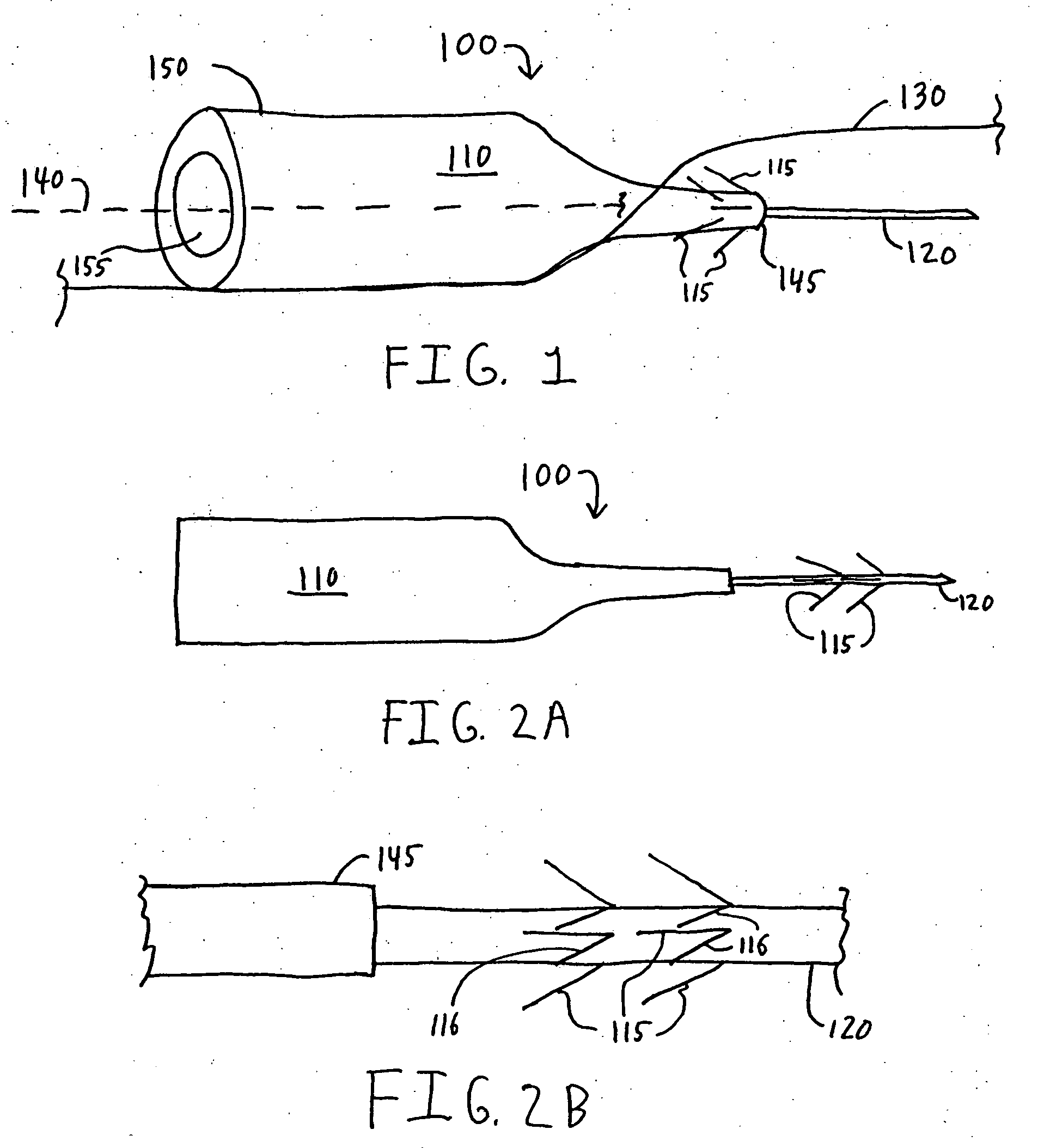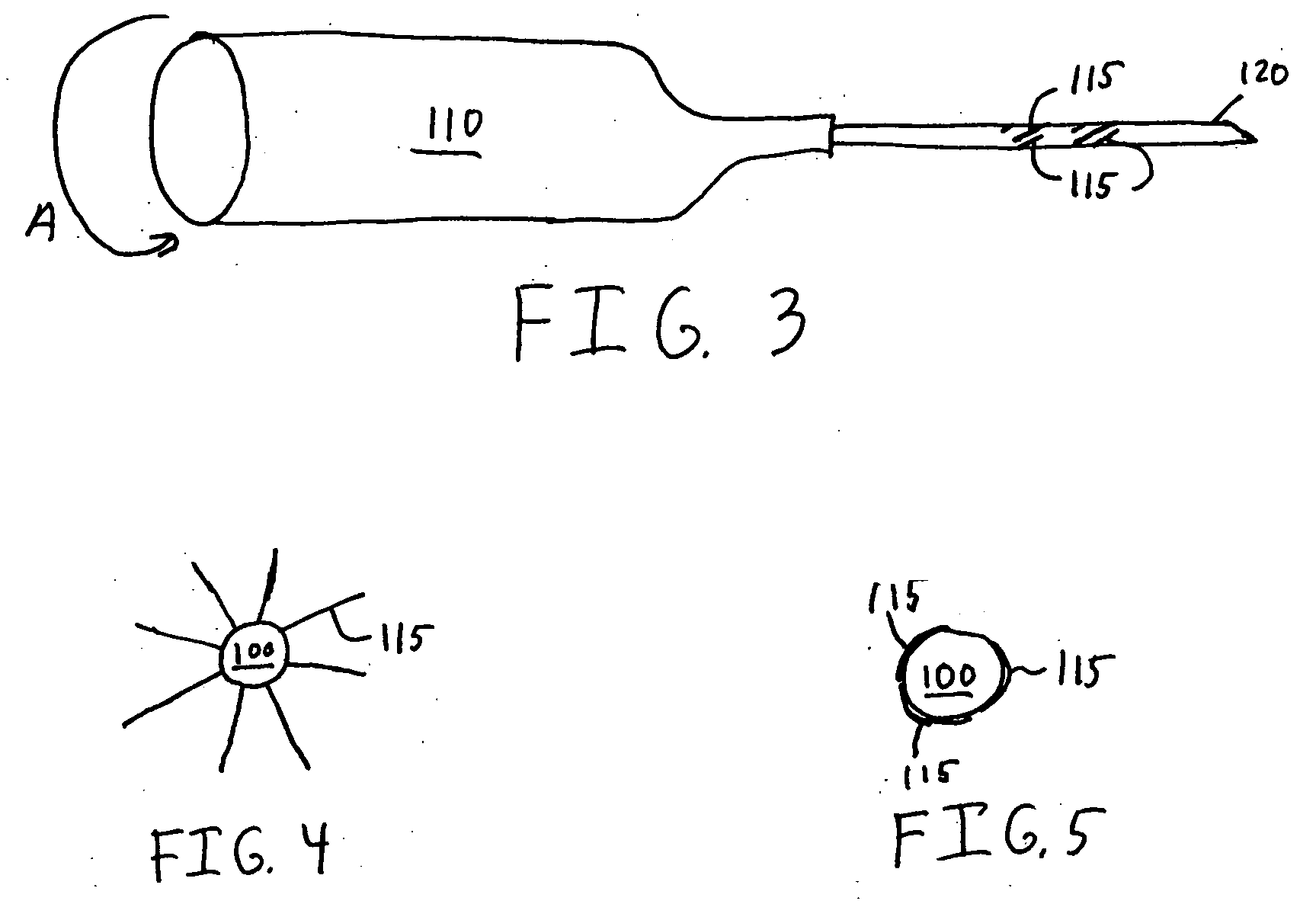Self-anchoring catheter and method for using same
- Summary
- Abstract
- Description
- Claims
- Application Information
AI Technical Summary
Benefits of technology
Problems solved by technology
Method used
Image
Examples
Embodiment Construction
[0029]FIGS. 1-3 illustrate exemplary embodiments of the invention directed to a self-anchoring catheter (or tubular body) 100 for securing or anchoring the catheter 100 to a patient's tissue or skin. The catheter 100 is self-anchoring in that it can be inserted into a patient's tissue or skin 130 (shown in FIG. 1) and can secure itself to the patient's tissue or skin 130 to prevent dislodgement.
[0030]FIG. 1 illustrates an exemplary embodiment of the catheter 100 having a hub 110 and a cannula 120, which together form a tubular body. In the exemplary embodiment depicted in FIG. 1, the hub 110 includes a longitudinal axis 140, a distal portion 145, and a proximal portion 150. The distal portion 145 includes anchoring mechanisms (or anchors) 115. The anchors 115 collectively are a means for anchoring the catheter to the patient. The cannula 120 extends from the distal portion 145 of the hub 110. The hub 110 and the cannula 120 have a bore (or passageway) 155 passing therethrough from ...
PUM
 Login to View More
Login to View More Abstract
Description
Claims
Application Information
 Login to View More
Login to View More - R&D
- Intellectual Property
- Life Sciences
- Materials
- Tech Scout
- Unparalleled Data Quality
- Higher Quality Content
- 60% Fewer Hallucinations
Browse by: Latest US Patents, China's latest patents, Technical Efficacy Thesaurus, Application Domain, Technology Topic, Popular Technical Reports.
© 2025 PatSnap. All rights reserved.Legal|Privacy policy|Modern Slavery Act Transparency Statement|Sitemap|About US| Contact US: help@patsnap.com



